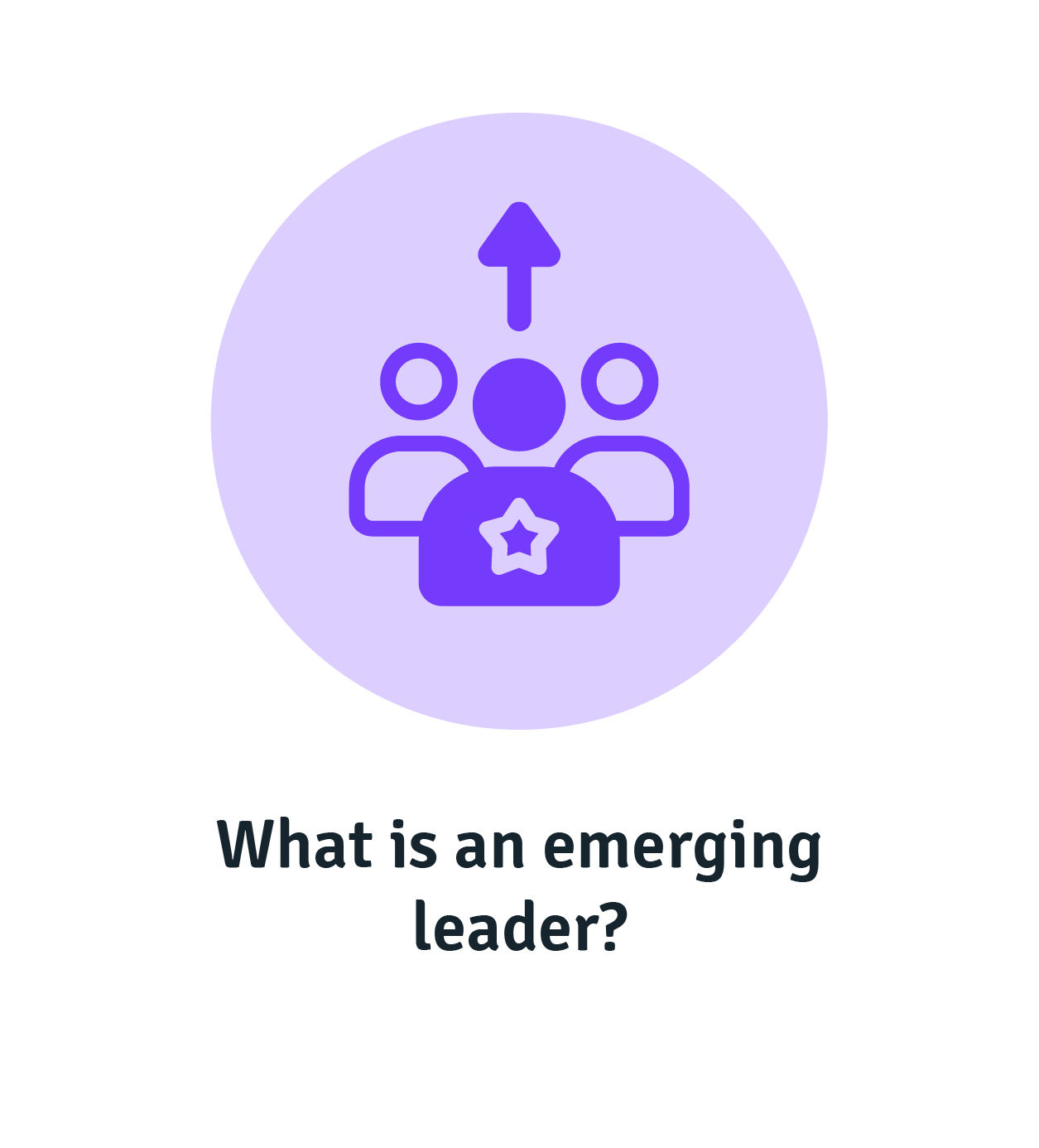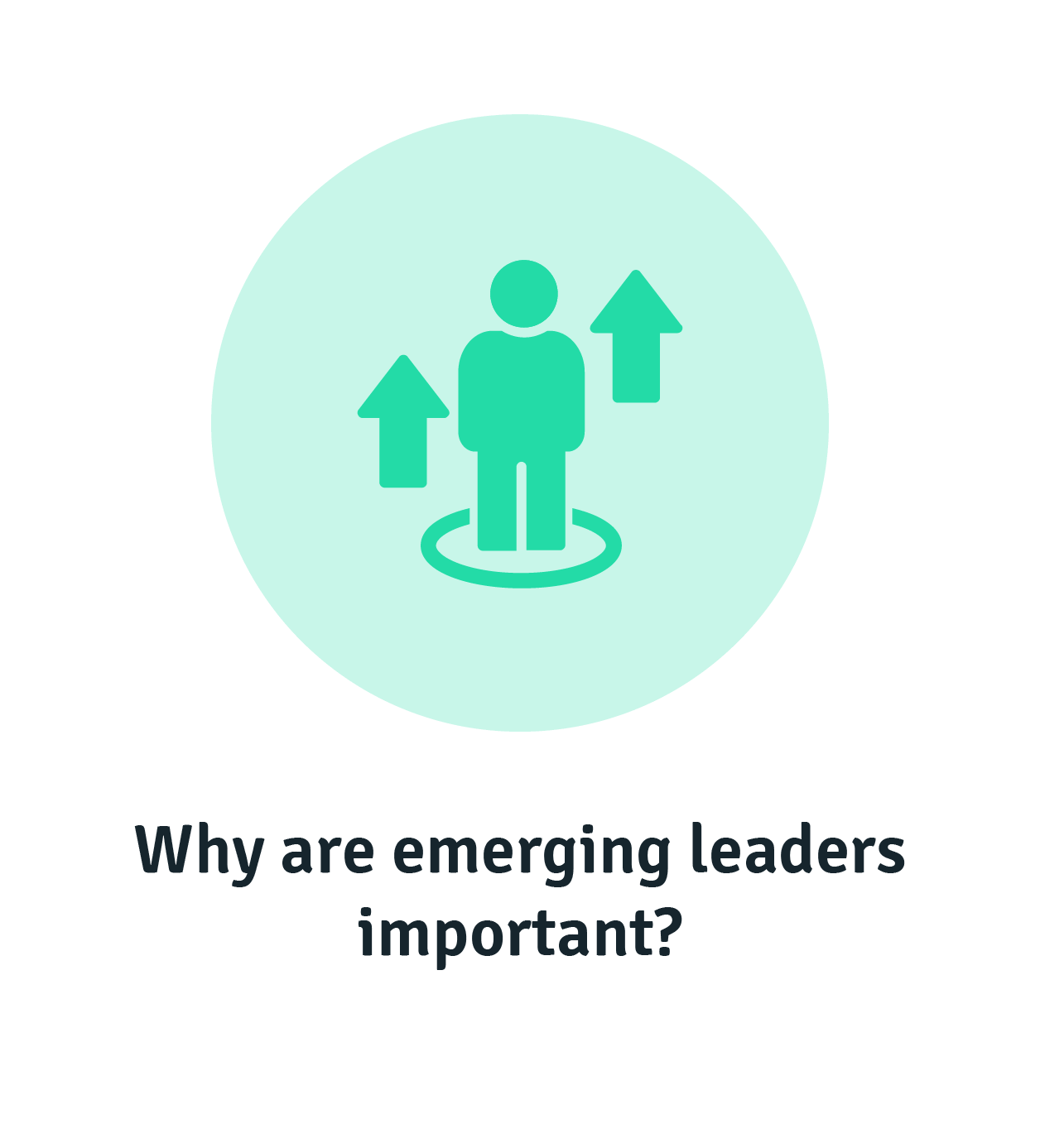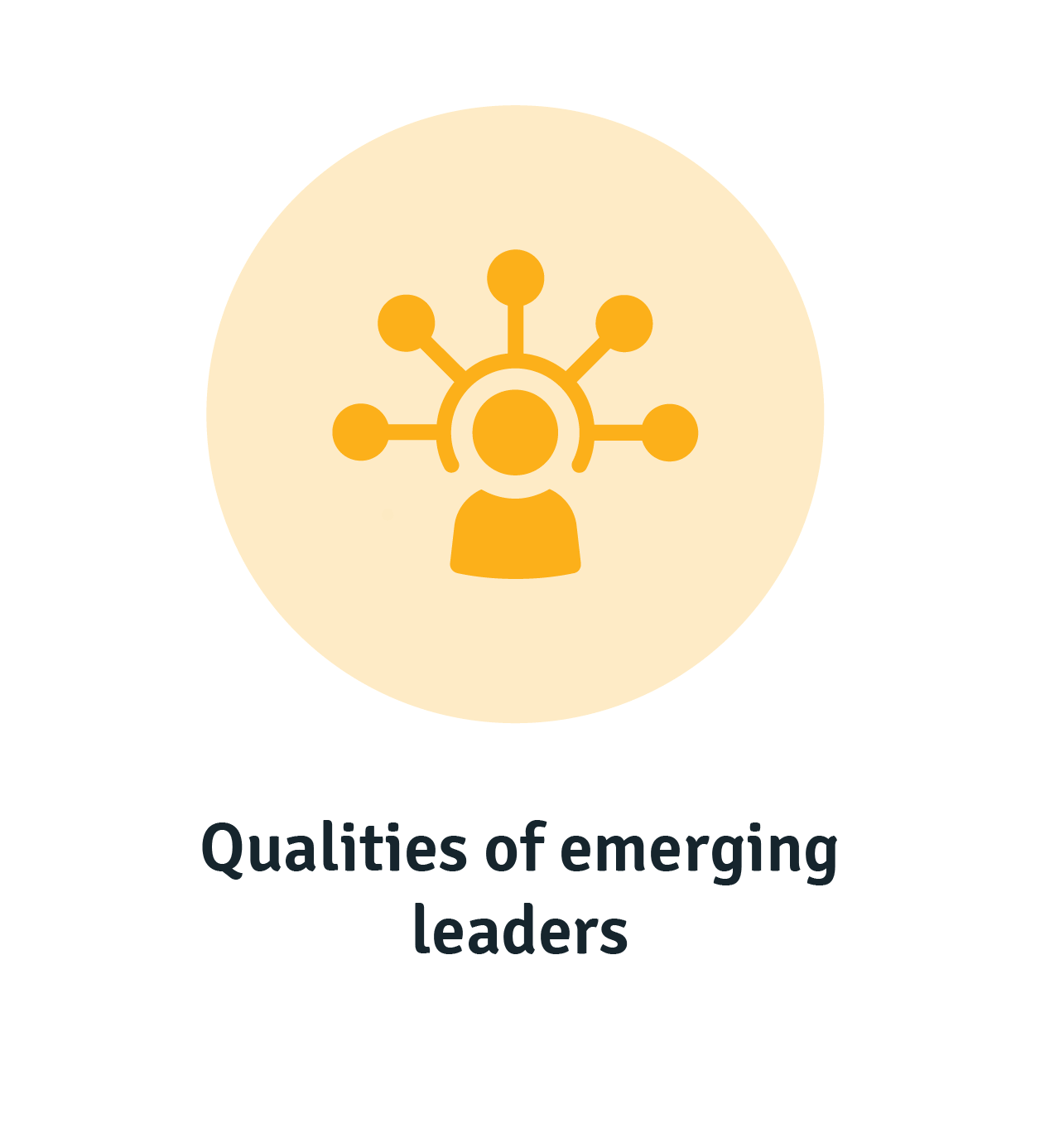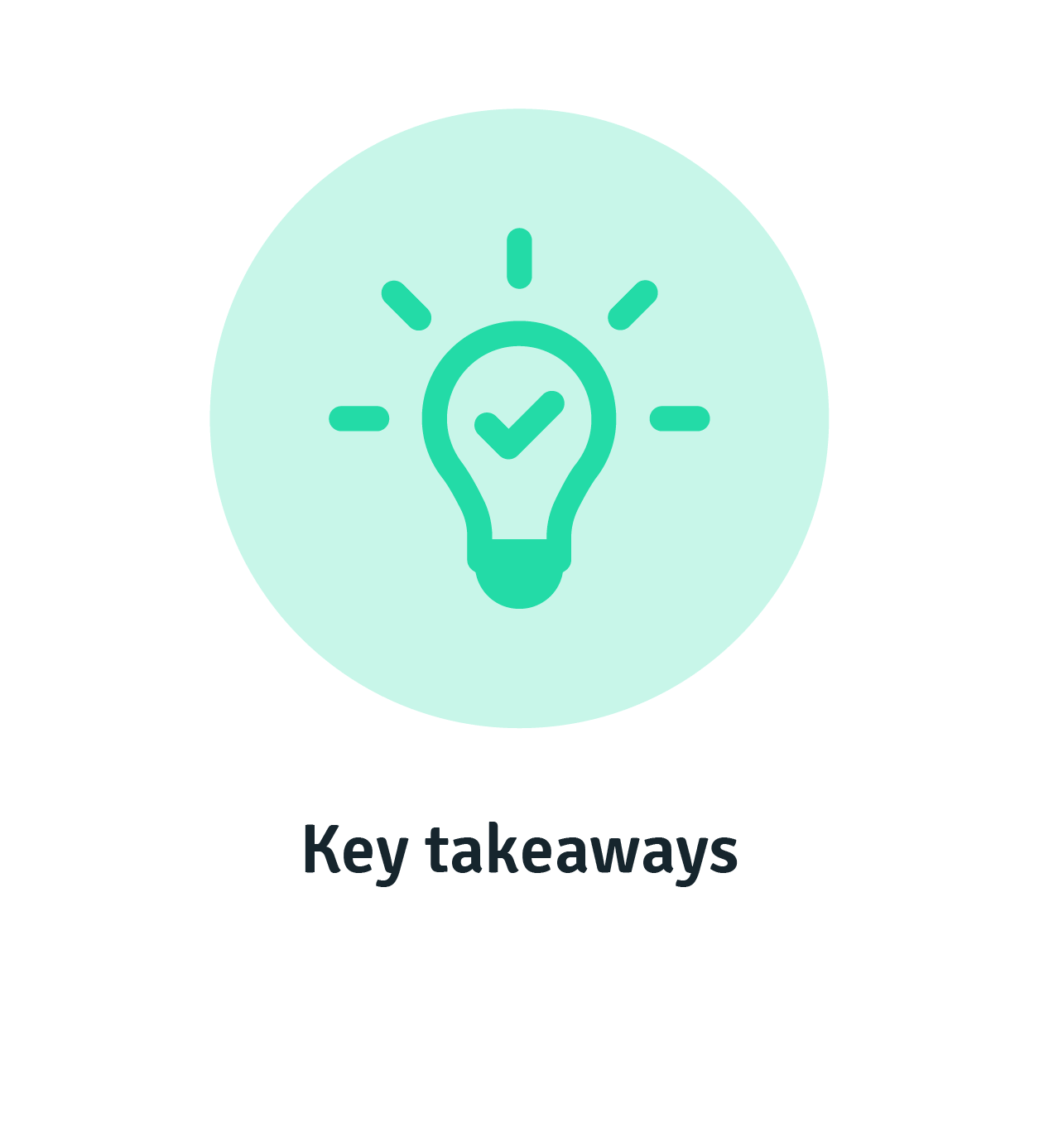Perhaps your organisation is scaling quickly and needs more leaders to keep up with growth. Or maybe you want to de-risk in the face of attrition. Regardless of your motivations, you’ll want to use an Emerging Leaders Program to support your business needs and help your employees along in their leadership journey.
What is an emerging leader?
Emerging leaders are people who have (or are interested in developing) the skills and knowledge required to become a leader in an organisation. They will be consistently high achievers in their roles, distinguishing themselves as a potential candidate for future leadership.
Why are emerging leaders important?
The workforce is always changing, and leaders come and go. No matter how effective your career progression activities, there’s no stopping an employee from leaving when the time is right for them. Obviously, this can leave you without the leadership capabilities required to run your teams.
This is where an emerging leader can help out. Emerging leaders appear organically in the workforce as high potential employees, influencing peers and leading strategic change without an official leadership title. They’re important because they’re able to drive productivity, increasing value for the organisation.
Rather than leaving your workforce to stagnate and fall behind as leaders move on, you can spend time developing the leadership mindset of your emerging leaders, preparing them for future senior management. Not only is it a crucial part of preparing your business for the future, but your emerging leaders will thank you for the opportunity for career development, too.
What is an emerging leaders program?
An emerging leaders program (ELP) is a course designed to develop the capabilities of employees who are soon to move into leadership positions. The purpose is to provide participants with the strategies, practical tools and problem-solving skills needed to become a better leader and achieve optimal team effectiveness.
The 4 qualities of an emerging leader
If you’re looking for the future potential leaders of your organisation, you needn’t look any further than your emerging leaders. But how do you identify who these emerging leaders are?
We’ve compiled a list of four characteristics an emerging leader possesses.
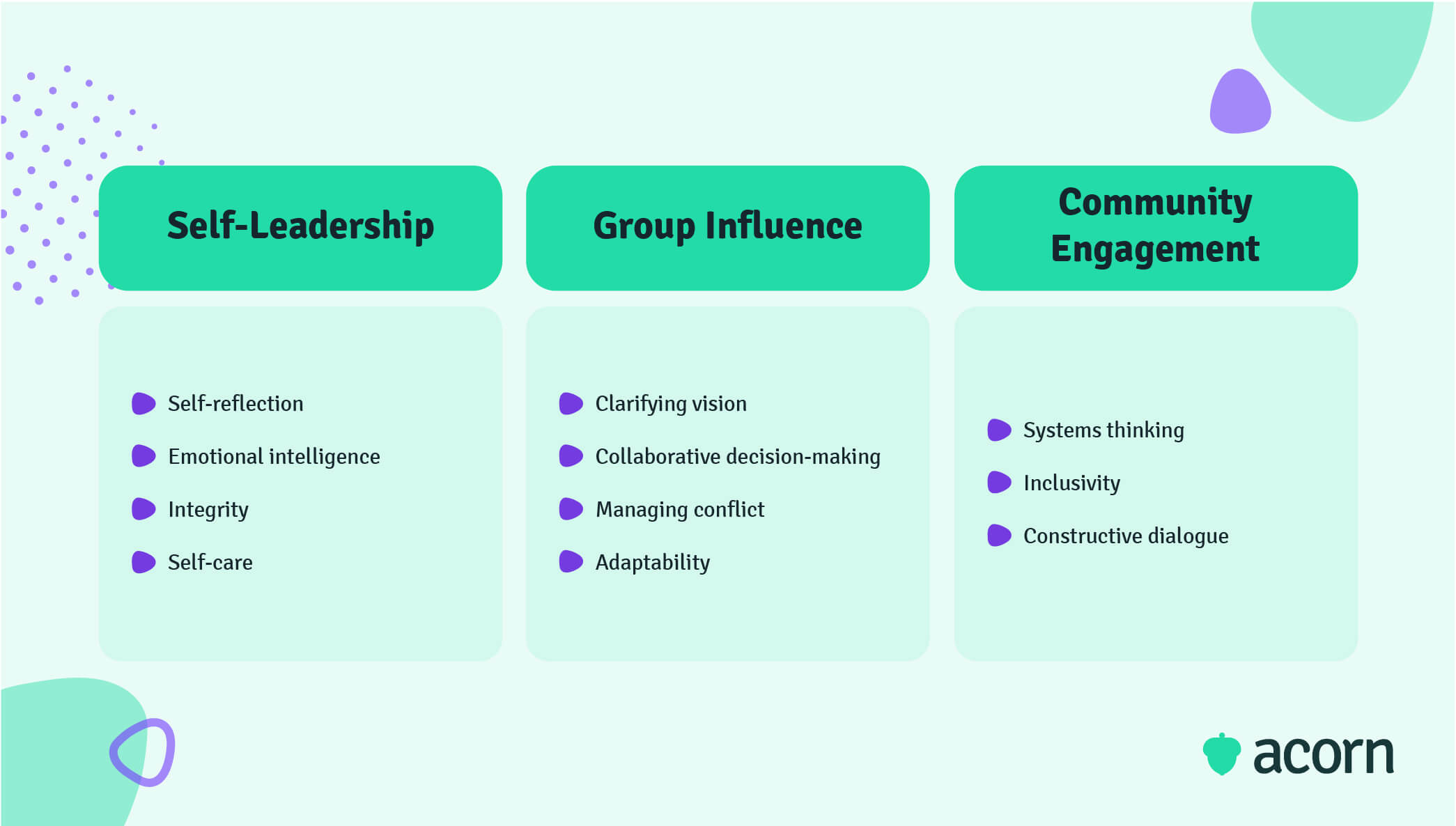
- Collaborative
- Influential
- High-achiever
- Reliable.
Collaborative
As we’ve mentioned before, emergent leadership is a phenomenon that occurs within collaborative environments. An emergent leader is a master of communication in the workplace, able to convey their thoughts in a way that every team member can understand as well as take time to listen to others. They’re a team player who actively involves their peers and encourages the expression of new ideas and alternative perspectives.
Influential
An emerging leader is able to inspire others around them or influence others to carry out their work and innovate. In this way they’re able to lead their peers and drive their success.
High-Achiever
In their current role, an emergent leader is known as a high-achiever. They consistently produce high quality work at a faster pace than the rest of their peers, and their peers look to them as subject matter experts. On top of this, they’re willing to exceed expectations and take on more responsibility than they were asked to, making them a true high potential.
Reliable
One of the most important qualities a leader can have is reliability. An individual can produce the highest quality work, but if they’re unreliable in other areas (e.g. they take forever to complete their part of a group project in favour of personal tasks), they may not have what it takes to fill a leadership role.
Part of this being able to rely on someone to be consistent. This could mean consistently producing high quality work or consistently stepping up to take on more responsibility.
Why organisations are implementing an emerging leaders program
Many organisations consider an Emerging Leaders Program to be important in their workplace. It’s an essential component of business success, succession planning and individual employees’ career planning. Here are the benefits of an ELP.
Develop effective leadership practices
A leadership program is designed to help upcoming leaders learn and recognise leadership practices and the capabilities that your organisation has defined as key to achieving outcomes. It’s no use adopting strategies that your peers don’t respond well to. People can’t lead effectively if their subordinates don’t resonate with them.
Identify future leaders and successors
Ultimately, you want your program participants to transition into management roles when the time comes. When it comes to succession planning, knowing who you want to succeed your outgoing staff is crucial. With an ELP you can identify which individuals are a good fit for leadership and pre-emptively provide them with training necessary to advance in their career, streamlining your succession planning process.
Engagement and morale
Perhaps most importantly, ELP participants should come out of it with confidence in their leading capabilities. You want to develop leaders who are comfortable making difficult decisions using critical thinking skills to reach the best outcomes for their team and the company as a whole.
Crucially, others in the workplace will also need to have confidence in an individual’s ability to lead. They can tell when a leader possesses the leadership skills and the self-reflection to recognise their own skills. Confidence in your leadership is a crucial way to enhance engagement and morale among peers.
The pitfalls of a badly implemented emerging leader program
We’ve talked about the benefits an ELP has for your business and why you should be using one. But you can’t just slap an ELP on your business and expect it to run smoothly and effectively.
Let’s take a look at what can happen if you implement an ELP incorrectly.
Poor business case
A major setback in ELPs actually occurs before the implementation process begins. Imagine this: You sit your senior leadership down and pitch an ELP to them, but they aren’t convinced. You don’t get the budget or support for your emerging leader program. These are the factors that will trickle down to the program participants and make or break their experience. If you don’t get the necessary buy-in or support to make the program work, then just like that, your leadership program is already at a disadvantage.
Lack of engagement
We’ve all been there. Management wants you to take part in some kind of learning or training, but you just can’t take on the workload on top of the responsibilities you already have. What’s more, you just don’t really see how this learning is a high priority in comparison to your projects.
When you’re implementing an ELP, you need to make sure you’re creating an environment in which employees understand the value of their training. Executives need to emphasise that value by setting aside time for employees to take part in their learning.
Learning doesn’t stick
The goal of leadership development isn’t just to teach participants how to effectively lead a team to complete their projects. It’s also about developing habits, strategies and behavioural change, rather than simply acquiring knowledge. These are the leadership skills that assist individuals in managing people, driving positive outcomes. You need to evaluate the effectiveness of your leadership program, because if it isn’t providing participants with learning that sticks, it’s not doing its job.
The best way to mitigate this is with a performance learning management system (PLMS). At Acorn, we’ve developed the first PLMS, designed to codify and operationalise capabilities to improve organisational efficiency. It’s the first platform to actually create a link between learning experiences and performance, enabling learners and their organisations to attain peak performance.
How do you make an emerging leaders program?
Knowing the effects a poorly designed ELP can have on your organisation means nothing if you don’t have the tools to create a well-designed one. We have some tips to help you create your ELP and make it as effective as possible.
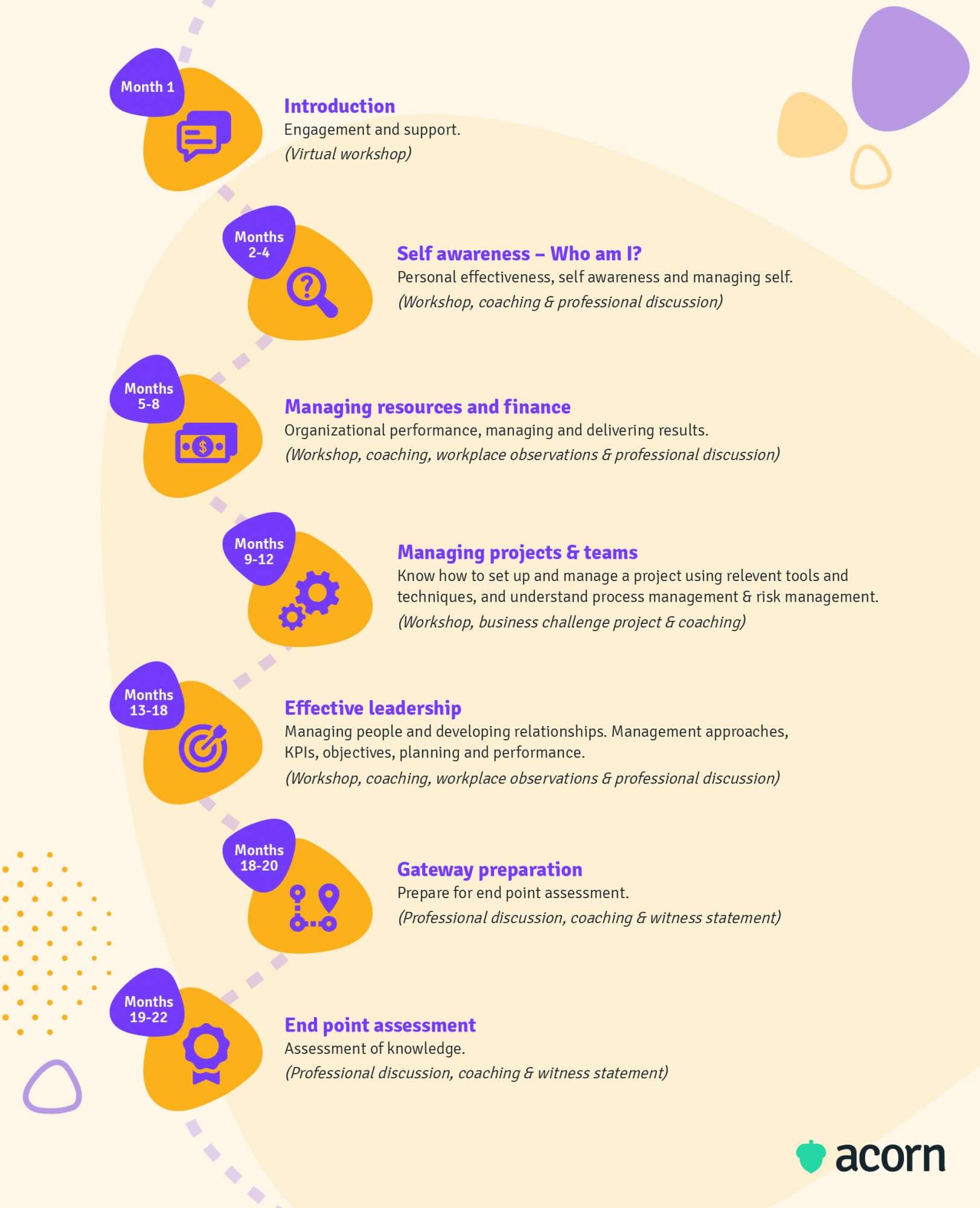
Challenging experiences
Theory is helpful, but you can’t learn how to lead people entirely from books. You need to allow your emerging leaders to take the initiative and have a go at guiding other people in the flow of work. Not only is this going to give them the practical experience they need, but it will also allow them to internalise the strategies and skills they’ve learned during the program.
Support and feedback
Just like with any training, people won’t know how they’re progressing if they aren’t receiving feedback. Make sure you regularly communicate what goals you expect them to meet, and continually update them on their progress through the program. Real-time feedback through on-the-job learning also ensures mistakes are corrected at the moment of need.
Guide, don’t lead
It’s easy to put HR or L&D in charge of an ELP and have them lead the learning. But that’s detrimental when the whole point of the program is to transition capable employees into leading positions. You need to allow them to take the initiative just as they would take responsibility if were they in an official leadership role. By this point you’ve already seen that they have what it takes to progress upwards in their careers, so all you need to do is provide a guiding hand in the right direction.
Collaboration and decision-making
Even in this digital age, collaboration with peers is still an integral part of the workplace and decision-making. As we mentioned before, a leader needs to have the support of their team, and that won’t happen if they can’t work effectively with them. Provide participants with collaborative experiences to build those people skills (or soft skills) needed to excel in a leadership position.
Key takeaways
An Emerging Leaders Program is an important step in preparing and transitioning your emerging leaders into leadership roles. When done badly, it can have little to no effect, but done well, your emerging leaders will be ready to take on the leadership roles they’ve prepared for. Not only is it an easy win for succession planning, but your organisation will be more productive and your workforce more engaged than before.
Related Reads on This Topic

How to Calculate & Benchmark Your Internal Promotion Rate
Understanding your internal promotion rate sheds light on internal mobility within your workforce. Find your promotion rate with one formula…

The Different Types of Leadership Training for Effective Leadership Development
Read how to use different types of leadership training to assist in developing leaders at different levels of your business…

Your Leadership Development Plan Template & How to Write One
Dive into the step-by-step process of writing a leadership development plan to ensure effective succession planning and business success…
